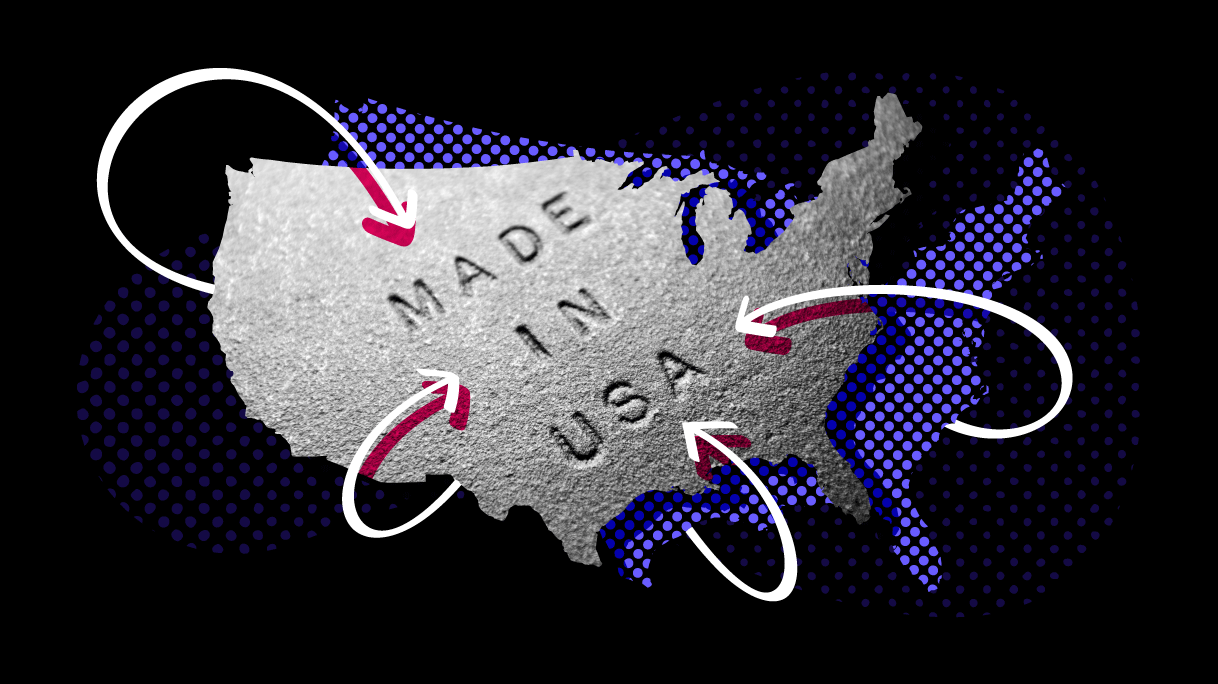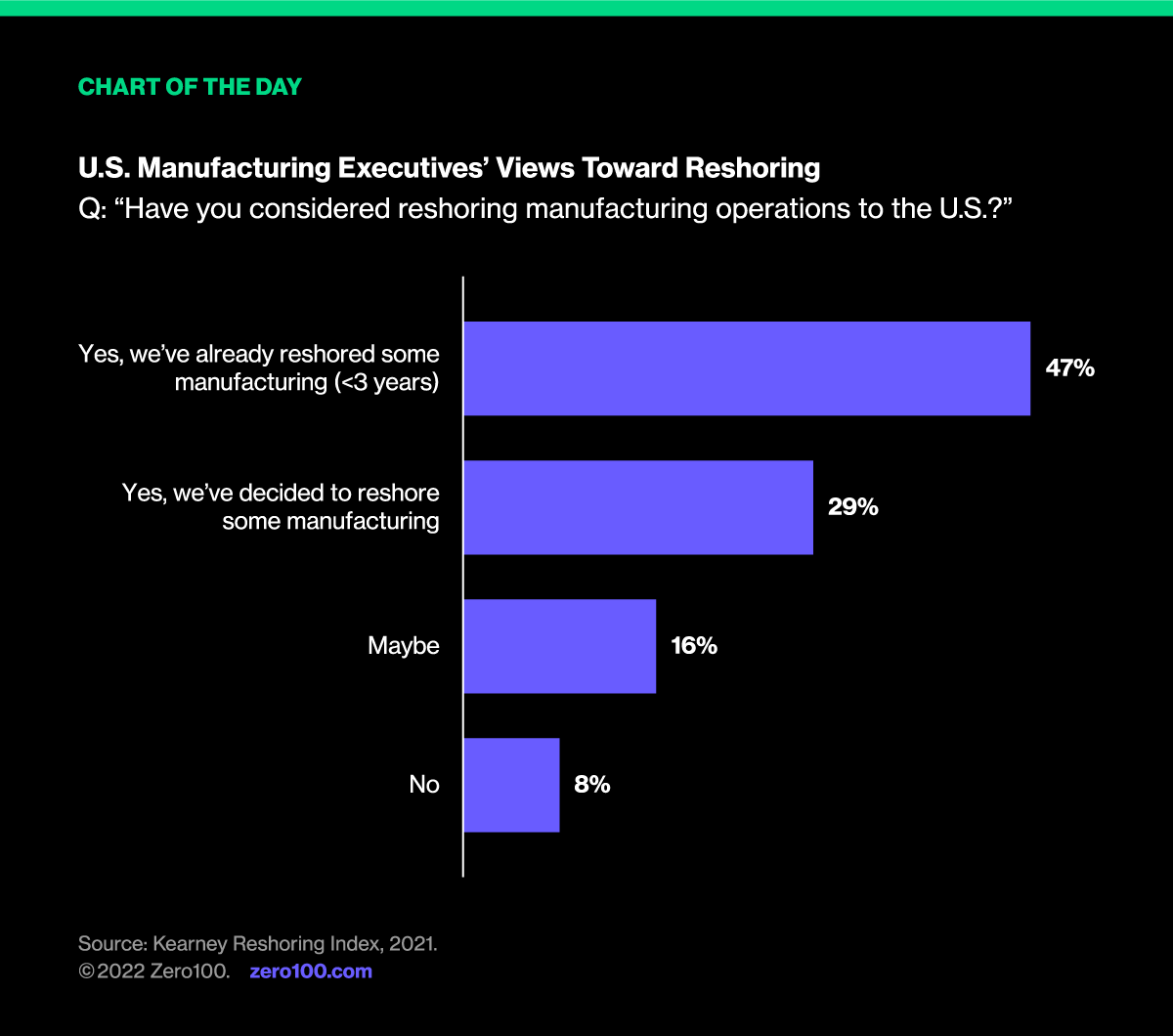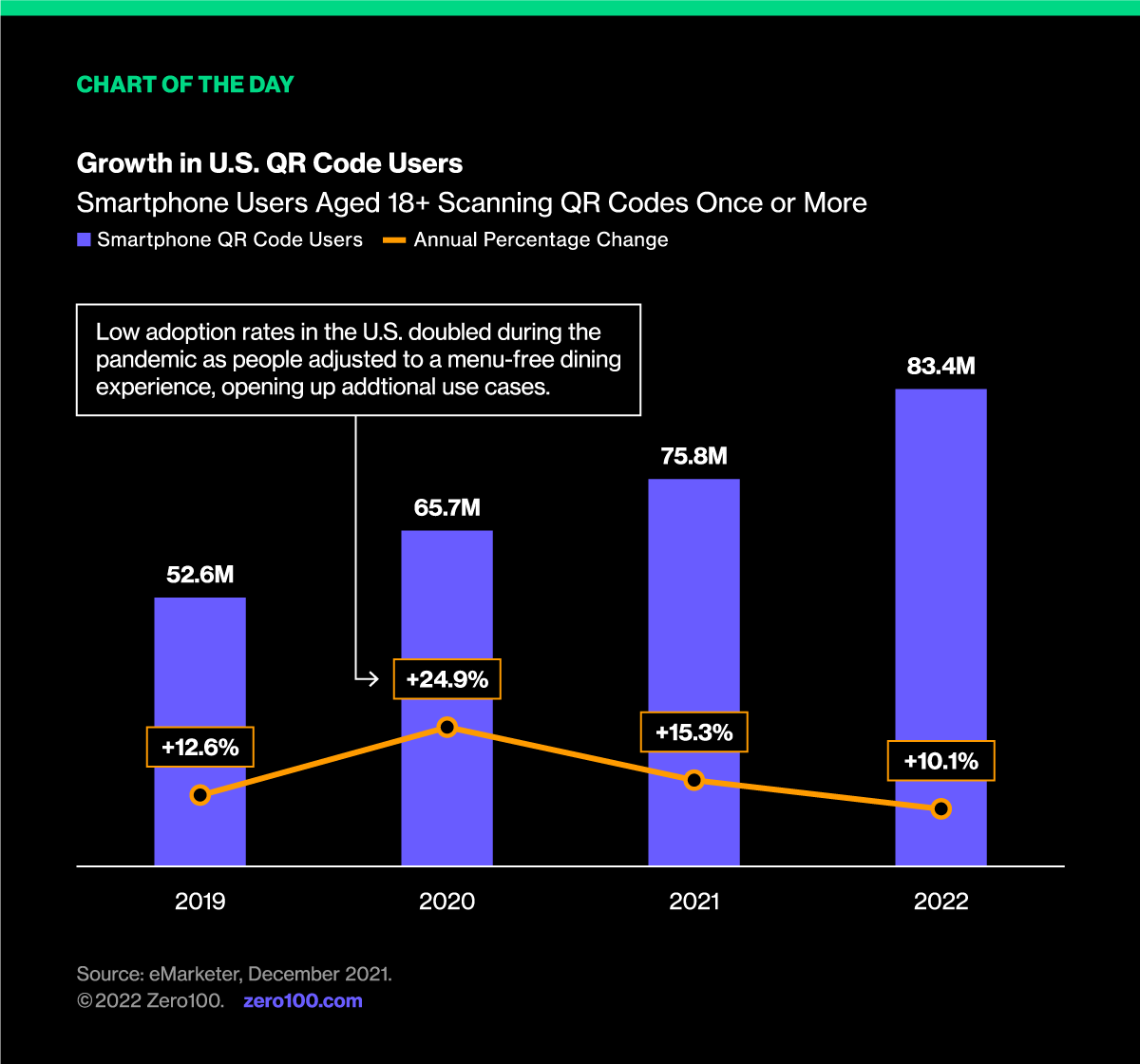
Reshoring: How to Quantify the Intangibles of Manufacturing Closer to Home
Reshoring isn’t only about resilience, jobs, or sustainability. It's about showing respect to communities we live and work in. Read our five community risks—and how to think about them when scenario planning.
Reshoring
Manufacturers everywhere are scrambling to re-shore, near-shore, or “friend-shore” their production operations. Companies as diverse as Toyota, New Balance, Estée Lauder, Lego, and Intel are moving to make products closer to where they sell them. Local or regional supply chains are all the rage as high transport costs, geopolitical tensions, and COVID disruptions force a pull-back from overstretched sourcing empires.

Building factories, buying equipment, scaling up local suppliers, and developing teams mean that reshoring is hugely expensive and complex. Network modelers are busy now using digital twins or simulation models to quantify the risks and benefits of getting this done.
Here are five intangibles to consider, and how to think about including them in your scenario planning models.
1. Headquarters: Proximity Pays
Research shows that the performance of a business establishment is better the closer its location is to corporate headquarters. Reasons include better oversight and local knowledge making for alignment with corporate strategy. Flagship stores and factories are often the best performing system-wide. Assume a positive correlation between manufacturing multi-factor productivity and proximity to business HQ.
2. Sustainability: Packaging Innovation
Forget eliminating plastic. It's simply too good at what it does to totally live without. But keep an eye on packaging innovation. Material science and new value propositions based on recyclable, re-fillable and otherwise closed loop products (e.g., Blueland, Coca-Cola, and Loop) are starting to have an impact on sustainability. Recycling rates have plunged since China stopped “buying recyclable” waste, and now carbon accounting points clearly towards shorter, more local supply chains as key to emissions reduction. Assume higher rates of engagement with customers, more recycled materials in your input stream, and lower energy costs.
3. QR Codes: What's Old is New Again
COVID taught U.S. consumers to use their phones to scan QR codes on everything. This means they can now see in a lot more detail where stuff comes from and the supply chain story behind individual product choices. With the trifecta of Canada Day, July 4th, and Bastille Day just around the corner, this may be the time to think about a patriotic pitch. Consumer habits are still primitive (more, for less... who cares where it comes from?), but survey data says this is changing. QR codes are the easiest lever we can pull to share our journey to bring manufacturing “home.” Assume your marketing folks nail the “Made in USA / UK / U Name It” pitch and add a sales uplift in your model for locally sourced product.

4. Airlines in Crisis: Tip of the Iceberg
As a Delta lifer, I was sure that the current U.S. airline meltdown was not universal, but instead a result of individual incompetence. Wrong. It is systemic and although I don't claim to know why, there is one takeaway that supply chain network modelers should consider: asset heavy logistics is either a natural monopoly that will rip you off whenever they can, or else it is a such a cut-throat competitive business that they'll have no resilience in times of stress. For reshoring analyses this means doubling or quadrupling the cost and halving the availability of transportation in your network modeling scenarios (unless you own the fleet yourself!).
5. Geopolitical Risk: China Divorce?
Taiwan accounts for 60% of global semiconductor revenue and the PRC is still factory to the world despite 15 years of hand-wringing about over-reliance on a region locked in a centuries-long rivalry with nearly everyone and playing by its own rules for intellectual property, environmental accountability, and financial probity. Add COVID lockdowns, economic instability, and extreme weather and the reasons to quit China sourcing run right off the page... We already know all of this but keep putting it off like a smoker who promises the next cigarette will be their last. Assume total war in the Pacific and see how your network model plays out.
Measuring Respect
Faster, better cheaper has been the supply chain mantra for too long. Reshoring isn't only about resilience, jobs, or even sustainability. It's about showing respect to the communities in which we live and work. Network models that can quantify, even roughly, the value of respect might not only dodge the next big supply chain crisis but help you as a leader make the case to do the right thing for the long run.
Critical Reading
BLOOMBERG
Bulging Warehouse, 28,000 Idle Containers Herald New Supply Chain Woes
Commentary: Dwell time for rail-bound containers out of Los Angeles-Long Beach exceed 10 days in May, the highest since July 2021. We have seen this movie before...
#portcrisis #logistics
RR DONNELLEY
Unpacking Reality Report
Commentary: Cross-industry survey of procurement, marketing, and packaging professionals demonstrate operational pressure such as material- and transportation-related concern are accelerating changes towards more sustainable packaging.
#packaging #sustainability
RETAIL DIVE
Nike's Q4 Sales Fall Slightly After 20% Decline in China
Commentary: Nike beat analyst expectations by missing a quarter, but making their year. While the direct sales were robust despite inflation, sales declined -20% in Greater China (where Covid-related lockdowns impacted 60% of area sales). Expect this to be the first shoe to drop in a long list of upcoming earning calls.
#Q4earnings #china